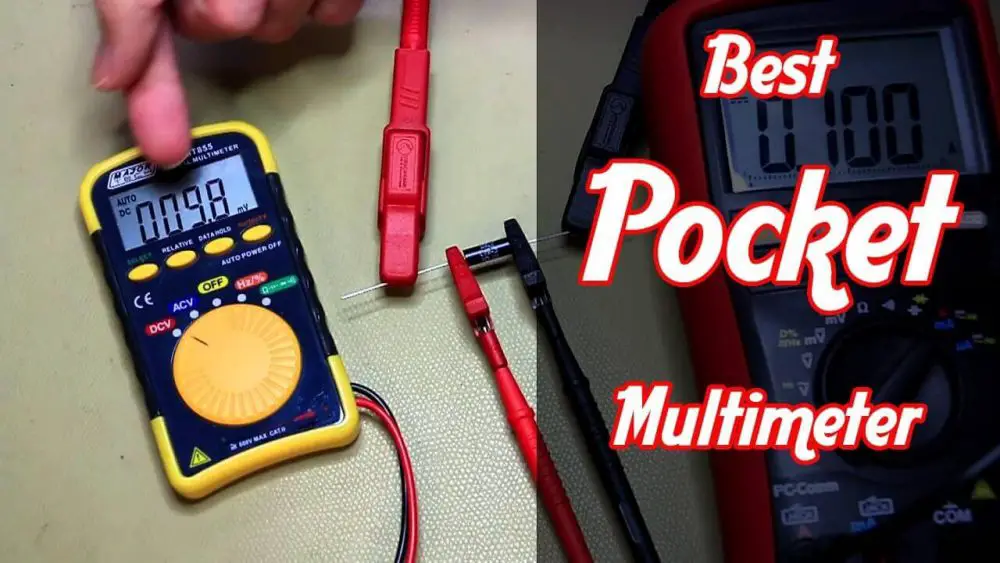How to Test Purge Valve with Multimeter
The article will explain to you a complete guide on How to Test Purge Valve with Multimeter. Although we will do further testing and cleaning to discuss symptoms of a damaged purge valve, this article will provide you with every necessary detail you need.
Table of Contents
How to test a purge valve:
The purge valve is a necessary part of your car’s Evaporative Emission Control System (EVAP). As the name implies, it correlates with purging. It is a part of the emission control of your vehicle. It secures the fuel system in our car so that the poisonous vehicle fuel vapours do not get released into the atmosphere or reversed into the vehicle. The fuel tank’s toxic fuel vapours are sealed into a charcoal canister or a container by the purge valve.
The purge valve is also known as a purge solenoid. It electronically operates and is connected with the engine. When a car engine ignites, the purge valve also gradually boots up. However, when the engine is off, it also stops working completely.
A purge valve is an integral part of the EVAP system. A flawed purge can cause severe issues like engine failure and choke. Therefore, it is necessary to know about cleaning a purge valve to even diagnose a bad one.

How to Test the Purge Valve -Test the Purge Valve with a Multimeter
The ways to test the purge valve with a multimeter may vary in different car models. We are using Klein Tools MM600 HVAC Multimeter
However, the basic steps to test are the same for all car models. Start to check the resistance between the terminals. With the help of a multimeter, this test will be applied to all the vehicle’s models.
Step 1: Locating the Purge Valve
To start the test, we need to locate the purge valves of the vehicle. But, a reminder before beginning, make sure that you should switch off the engine for 15 minutes to half an hour. After that, you need to find the purge valve. Generally, these valves are placed behind the silencer, placed on top of it. Behind the silencer is called EVAP charcoal container. The purge valves are inside this container. If you cannot find the purge valves, your vehicle’s manual could be a great help, or you may also search the internet by defining the model of your vehicle’s graphics related to the engine.
Step 2: Rearranging the Cables
After we have purge valves, you may notice a two-pin harness that connects to the device. However, it would be best to disconnect it and attach it to the multimeters’ adapter cables. The adapter wires usually come with the testing kits of the multimeter. Therefore, the purge valve’s terminals connect to the multimeter’s probes.
Step 3: Testing or Checking
Lastly, we will measure the resistance. Any resistance measurements below 22.0 ohms and above 30.0 ohms would indicate that you require to replace the valve. Buy an extra valve, and you should replace it on the spot. But if you go to a shop, you must reconnect the harness wires to the device.
How to Clean Purge Solenoid Valve
We clean the Purge Solenoid valves in two ways depending on your technical experience and mostly scrubbing the dirt that can do the functionality of a purge valve by simply cleansing the internal parts without actually opening them.
Cleaning Purge Solenoid Valve without Opening
Step 1:
Spray an adequate amount of carb cleaner or Mass Air Flow Sensor cleaner into both the tubes of your valve.
Step 2:
After spraying, cover both ends of the tubes with your fingers and shake well. Wait for several minutes while keeping both ends covered. The cleaner will remove all the dirt.
Step 3:
After waiting at least half an hour, uncover both tube’s ends and let the liquid you sprayed drain out entirely from the tubes. The drained liquid would be dark with dirt, debris, and charcoal. Repeat Step 1 and Step 2, both the steps again and again. Once you see that the drained liquid looks clean and clear, this should suggest that your valve is completely clean.
Step 4:
Switch off the connector valve while using the Spray contact cleaner. After that, let everything dry thoroughly.
Deep Cleaning your Purge Solenoid Valve by Opening It
Remember, do not proceed to deep clean your purge solenoid valve without proper technical knowledge. Anyway, you can manage to open a purge valve with the help of a screwdriver or a small knife.
Step 1:
In most purge valves, the two halves are stuck together with the glue. So, first, you have to remove all the glue as possible. Then, after removing the glue, try to tear it to open both ends of the casing apart firmly but with extra caution.
Step 2:
After separating the two halves, you will have a small cap-like rounded piece on one half, and on the other, you will find all the working parts, such as the solenoid. Now, remove the body of the valve from the case.
Step 3:
In step 3, check the condition of the rubber parts and the o-rings. If they are working and intact, try lubricating them with silicone grease.
Step 4:
How to clean purge solenoid valve:
Spray the carb cleaner or MAF cleaner on the inside walls of the solenoid. It is a good idea to rub the openings with the help of a dry cloth if you want a deep cleansing.
Step 5:
After you finish the cleaning, you should reseal the case with glue or rubber. Before sealing the valve with sealant or rubber, make sure you reassemble everything together correctly because it can be challenging to reopen the two halves of a sealed valve. After sealing the valve, let the glue or rubber dry.
How to test GM Purge Solenoid
The best place to look up how to test GM purge solenoid is the vehicle’s manual. The internet is another option.
Purge Container Valve Problem
The purge valve is an integral part of a vehicle’s Evaporative Emission Control System (EVAP). So, problems or issues with the purge container valve would cause many issues with the EVAP system. The most repeated problem or issue with a purge valve is when it doesn’t fully get closed. As a result of a problematic purge valve, the output level of the engine’s emissions gets hampered, even engine failure is possible. In addition, the Purge valve container can cause problems if it is clogged with dust and dirt. Sometimes, extreme weather conditions can lead to purge container valve problems.
Purge Valve Ticking
The purge valve makes clicking or ticking noise when the car is running. But you cannot hear the noise from inside the vehicle. However, if the ticking noise is too loud or you can listen to it from inside the car, there is a good sign of some issues with your purge solenoid valve.
What happens if the purge valve is stuck closed?
As mentioned above, if a purge valve does not work, it causes a wide range of issues with the EVAP system. The engine’s output level of emission is highly affected by a bad purge valve. However, the positive thing is, a purge valve always gives various indications when it goes wrong. Some of the symptoms of a bad purge valve are described below:
Check the Engine Light is On
If the engine light on your dashboard lights up for several problems in your vehicle and a bad purge valve is one of them. The engine controls the purge valve. So, whenever the purge valve is wrong, the engine light is turned on. When your vehicle detects a higher or lower level of vapours, the check engine warning lights is set to off. Also, various EVAP system error codes are displayed, e.g., P0446, P0441, etc.
Rough Idling and Other Engine Problems
When the container purge valve in your vehicle has a problem, i.e., it sticks open or does not close completely, so your car engine will have a rough idle. Because when the purge valve does not close completely, which results in a vacuum leak that badly hampers the idle speed and quality of the vehicle’s engine. A bad purge valve or the hoses attached to the purge valve can also build a vacuum leak. Therefore, if your car has a rough idle, your vehicle will not accelerate smoothly and consistently, particularly when driving at a low speed.
Difficulties in Starting the Car
When the container purge valve in your car is stuck to open or not close fully, the resulting vacuum leak will create problems while starting your vehicle. The outside air that enters the engine because of the leak will disrupt the engine’s internal combustion process; this may cause the motor not to start.
The Decrease in Gas Mileage
The EVAP system depends majorly on the nature of the container purge valve of your car. So, when the EVAP system does not work quality because of a bad purge valve, it affects the mileage. The gas is leaked into the environment rather than stored in the bad purge valve; this affects mileage significantly lower than usual.
Failing the Emission Test
The container purge valve takes the duty of redirecting the fuel vapours back into the engine; this stops the toxic hydrocarbons and other fumes from spreading into the environment. A failed or bad container purge valve would cause your vehicle’s tailpipe to emit these toxic fumes into the atmosphere. So, your vehicle will also fail the emission test.
Damaged Gaskets and Oil Leakage
There will be continuously increasing pressure because a malfunctioning purge valve will not emit the vapours. If the pressure keeps building up for an extended period, it may become so intense that it could damage the rubber seals and gaskets. When these are destroyed, as a consequence, there will be oil leakage. Oil would leak from the emission system to the engine, causing severe damage to your engine.
Were you driving with a bad purge valve?
The purge valve is a crucial element of a vehicle’s Evaporative Emission Control System (EVAP). Driving with a broken purge valve can also harm your engine’s health. It would result in environmental pollution as the toxic fumes are released into the environment. Furthermore, the mileage is also significantly getting lower when driving with a bad purge valve.
What are the symptoms of a purge valve failure?
The first symptom is a rough idle. The difficulty is mainly associated with a bad container purge solenoid is difficult starting. Check Engine Light comes on. Unfortunately, a defective container purge solenoid set off the Check Engine Light.
Can a Bad Purge Valve Cause Misfire?
A bad purge valve can lead to circumstances such as causing a misfire. For example, a bad purge valve doesn’t close fully or doesn’t open in time. As a result, an excessive amount of fuel vapour starts gathering in the charcoal container. If things continue for a more extended period, the engine cylinder is submerged with fuel vapours that get repeatedly created and burned. These burning vapours can lead to a fire break out in the engine, which may choke.
Frequently Asked Questions
You may test the container purge valve in different ways, such as using a battery and vacuum pump or a multimeter. With a multimeter, you measure the resistance of a purge valve. On the other hand, you need to vacuum into the container valve using a vacuum pump.
There are some classic symptoms your vehicle is going to exhibit when the purge valve is bad. The most common signs for a bad purge valve are listed below:
1. Lower Gas Mileage
2. Emission Test Fail
3. Check Engine Warning
4. Rough Idling
5. Car Starting Difficulty
6. Damage Gaskets
There are no differences between a purge valve and a purge solenoid. For example, the container purge valve of the EVAP system of your vehicle is called purge valve in short, and it is also known as purge solenoid. So, a purge valve and purge solenoid are the same; there’s no need to get confused!
Conclusion
In summary, purge valves are essential for your vehicle and even for the environment around you. So, it would be best if you were careful when dealing with it. You should clean it appropriately and test it regularly for any irregularities. Always seek help from your car’s manual or internet when in confusion. Finally, and most importantly, it would be best if you always looked out for bad purge valve symptoms. The moment any symptoms show up, seek professional help immediately.
Related Posts:
How to test if a wire is live without a tester



